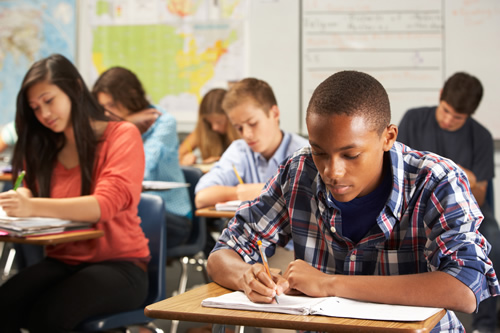In A cone has a volume of 1441.26 cubic inches. If the radius of the cone is 9 inches, what is the height? today’s interconnected globe, trainee communities play an essential function in shaping scholastic and personal experiences.

These communities are not simply collections of people yet are dynamic environments that cultivate growth, learning, and cooperation amongst pupils. They differ widely in form and feature, from campus-based groups to global online forums, each offering special opportunities for engagement and growth.
Whether you are tipping onto an university campus for the very first time or taking part in virtual learning environments, recognizing the structure and benefits of student communities can greatly improve your instructional trip. This short article looks into the essence of pupil neighborhoods, exploring exactly how they function, the advantages they offer, and the methods which they can be leveraged for individual and scholastic success.
Comprehending Student Neighborhoods
Pupil communities are foundational to the scholastic experience, serving as both social and academic support group. At their core, these areas are groups formed naturally by pupils who share typical interests, objectives, or disciplines. They can be casual, such as study groups, or formal, like pupil unions and clubs.
These communities are characterized by a common identification and the cumulative search of knowledge, skills, and experiences. They work as systems for trainees to attach, team up, and contribute to each various other’s growth, extending beyond scholastic boundaries to affect personal advancement and area interaction.

Essentially, student communities are microcosms of larger societal structures, where leadership abilities are sharpened, concepts are traded, and long-lasting friendships are developed. The communications within these neighborhoods mirror a diverse mix of social, intellectual, and social dynamics.
- Networking Opportunities: Pupil communities offer a network of peers and mentors who can use support and guidance.
- Ability Advancement: Taking part in community tasks assists pupils create vital abilities such as communication, management, and teamwork.
- Source Access: These areas often provide access to academic resources, consisting of study materials and professional suggestions.
- Social Interaction: They offer a system for social communication, easing the shift right into brand-new academic atmospheres and aiding to deal with seclusion.
Through these various features, student areas end up being integral to the holistic advancement of students, laying a foundation for future professional and personal success.
The Benefits of Taking Part In Pupil Communities
The advantages of joining pupil areas are complex, influencing both academic and individual balls.

On a scholastic level, these neighborhoods motivate collaborative knowing, allowing pupils to benefit from diverse point of views and competence. Sharing expertise and resources within a neighborhood can lead to extra efficient discovering end results and improved learning resource hub academic efficiency.
Moreover, student areas supply a system for personal growth and self-discovery. By involving with peers from different backgrounds and self-controls, students get a more comprehensive worldview, improving their cultural skills and compassion. This exposure to varied perspectives is indispensable in establishing critical thinking and problem-solving abilities.
In addition, energetic participation in neighborhood tasks can enhance pupils’ self-confidence and self-confidence. Taking on leadership roles or taking part in conversations and occasions fosters a sense of accomplishment and belonging, which is essential for overall wellness and motivation.
Types of Pupil Areas
Pupil communities come in different types, each satisfying various rate of interests and objectives. These can be extensively classified into scholastic, social, recreational, and specialist communities, among others. Each type offers special systems and possibilities for trainee interaction.
- Academic Communities: These are generally focused around specific fields of study or academic interests. Instances include study hall, honors cultures, and department clubs.
- Social Communities: These teams focus on advertising social recognition and diversity, often organizing occasions and tasks to commemorate various traditions.
- Leisure Areas: These consist of sports groups, leisure clubs, and hobby-based teams that give a break from academic rigors and advertise physical and mental health and wellness.
- Professional Neighborhoods: These are focused on career growth, using networking opportunities, workshops, and mentorship programs to prepare students for the professional globe.
By determining and involving with the right neighborhoods, trainees can tailor their university experiences to align with their interests and career aspirations, leading the way for a satisfying scholastic journey.
Constructing a Flourishing Pupil Community
Producing and maintaining a thriving trainee community needs initiative and collaboration from both students and schools. It begins with cultivating an inclusive environment where all students feel welcomed and valued no matter their histories.
Institutions can sustain this by offering sources and facilities that encourage interaction and participation. This consists of creating physical spaces like pupil unions and online platforms that promote communication and partnership. Additionally, arranging occasions, workshops, and seminars can better enhance interaction, offering pupils with chances to attach and gain from each various other.
Management and Pupil Involvement
Efficient management is important in nurturing a successful pupil community. Management roles within these areas offer students a chance to develop and demonstrate their organizational and social skills. Pupils that think these duties contribute considerably to setting the tone and direction of their neighborhoods, affecting their peers favorably.
Urging leadership and active participation amongst pupils not only strengthens the community but likewise empowers individuals, preparing them for future obstacles. By cultivating a society of collaboration and support, pupil areas can prosper, leaving an enduring impact on their participants and the scholastic environment overall.


